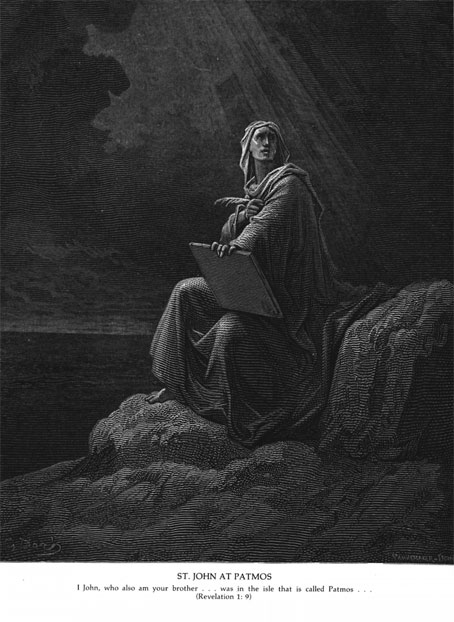Was John in exile or just preaching on Patmos?

There are conflicting traditions concerning John. A widely held opinion is that he was banished to Patmos by the Emperor Domitian who reigned from AD 81 through 96. If so, this makes preterism a paper tiger.
In the discussion on the American Vision forum, Thomas writes:
The Syriac History of John, the Son of Zebedee makes reference to John’s banishment under Nero. Eusebius discovered this manuscript in Greek and translated it into Syriac. It states:
“After these things, when the Gospel was increasing by the hands of the Apostles, Nero, the unclean and impure and wicked king, heard all that had happened at Ephesus. And he sent and took all that the procurator had and imprisoned him; and laid hold of St. John and drove him into exile; and passed sentence on the city that it should be laid waste.”
Further, the oldest copies of the Book of Revelation in the Syriac language all have as part of their titles:
“The Apocalypse of St. John, written in Patmos, whither John was sent by Nero Caesar.”
The late daters’ evidences can all be traced back to an ambiguous statement by Irenaeus. In this case, it is not smoke = fire, but smoke and mirrors. (See Ken Gentry’s excellent Before Jerusalem Fell for a basically water-tight case on an early date. It is a must-have.1).
Anyhow, I find it amazing that the discussion often rests on prooftexts and extra-biblical information. These have their place, certainly, but our God is a God of order. What does the Bible say? The answer to both John’s exile and Revelation’s date of writing are found in Ezekiel.
No one disputes that the book of Ezekiel’s first sections are about the destruction of Jerusalem. Preterists understand that the last section is about its restoration. The centre of the book focusses on the corrupted nations in the “wilderness.” So Ezekiel follows the “slavery to sabbath” (Egypt to Canaan) pattern.
As David Chilton points out in Days of Vengeance, Revelation follows the structure of Ezekiel step by step. Revelation is also about the end of the old worship, the testing of God’s people in the wilderness for forty years, and their triumphal entry into a new land and a rebuilt Temple/city. Anyone who misses or minimises the destruction of Judaism as a big player in the New Testament is swallowing a camel. We misinterpret the apostles’ warnings of an imminent event because we don’t understand Bible symbols.
Regarding John’s being on Patmos in exile, the scriptural evidence is typological yet strong. He is on an island, and throughout Revelation, islands symbolise Gentile territories (in the Gentile “sea”.) These islands, and the Jewish mountains, fled away when the New Covenant kingdom arrived. There was no more Jew/Gentile division. Secondly, Ezekiel began with the prophet in exile. He was given visions to share with fellow exiles as warnings because they already contained seeds of the same destruction that would soon befall Jerusalem, hence the letters to the seven churches. The judgments upon the “exile” churches prefigure the judgments upon the harlot church that would soon be burned with fireunder the Law. Both Ezekiel and Revelation end with the exiles resurrected from the tomb of Babylon and occupying the mediatorial house cleaned and decorated by the Prince.
JLVaughan added:
“The corporate Israel resurrected both times. The first to build the new temple in Jerusalem. The second to be the new temple in the New Jerusalem.”
_______

























